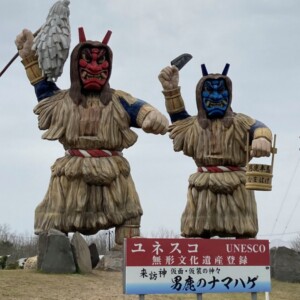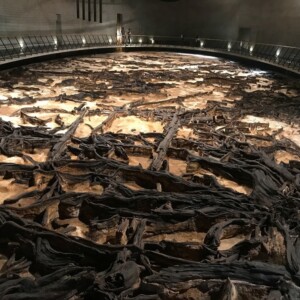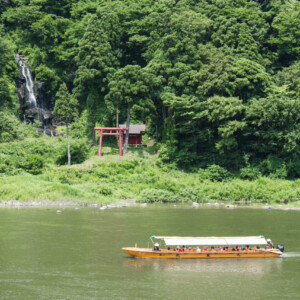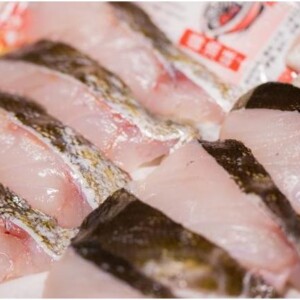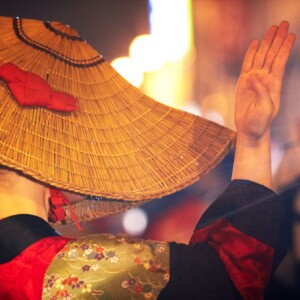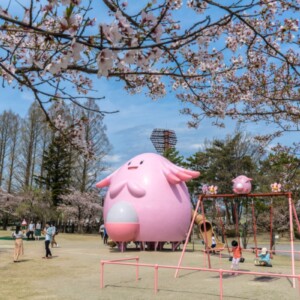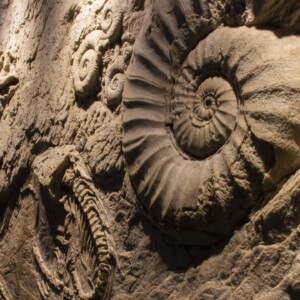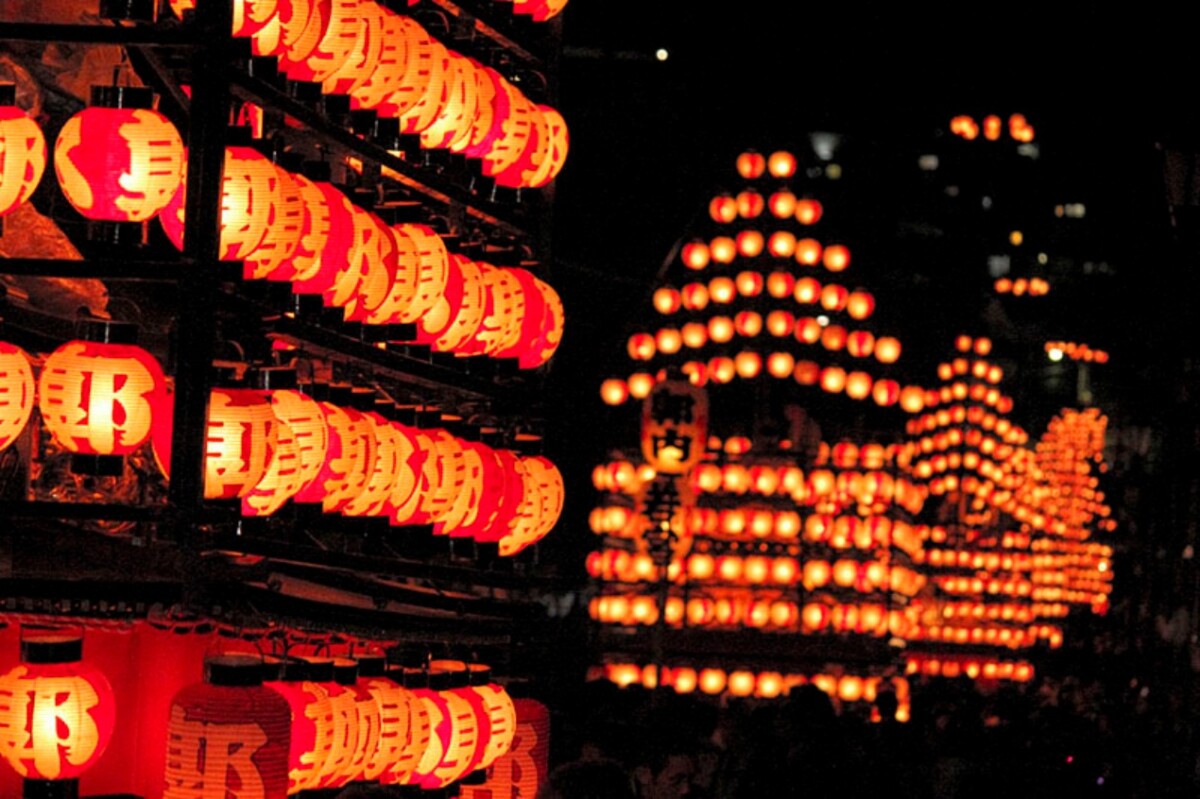
Four traditional festivals in Nihonmatsu City! Introducing the highlights [Fukushima Prefecture]
table of contents
In Nihonmatsu City, a castle town of 100,000 koku, there is the Nihonmatsu Lantern Festival, which is said to be one of Japan's three major lantern festivals, the Nihonmatsu Chrysanthemum Ningyo, which is the largest in Japan, and the Harimichi Abare Dashi, which has a tradition of over 400 years. ” and other festivals and events become more popular from autumn onwards.
In particular, the Nihonmatsu festivals, whose traditions are firmly inherited by neighborhood associations and youth associations in each region, are representative festivals of Fukushima Prefecture, full of charm and power. This time we will introduce four representative festivals that have been passed down in Nihonmatsu.
“Nihonmatsu Lantern Festival” is a symbol of Nihonmatsu
Nihonmatsu is a typical festival that symbolizes Nihonmatsu so much that it is called the "lantern festival."
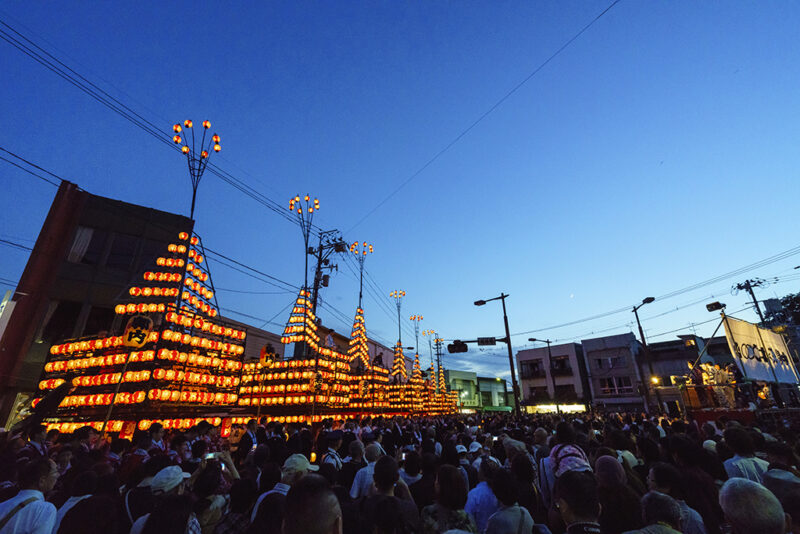
It is held on the first Saturday, Sunday, and Monday of October every year, and in Reiwa 5, it is scheduled to be held on October 7th (Saturday), 8th (Sunday), and 9th (Monday).
It all started about 370 years ago. when Niwa Mitsushige joined the castle as the lord of Nihonmatsu "In order to carry out good politics, firstly, the people of the territory need to exalt the will of respect and god, " and Nihonmatsu Shrine was held at the present day Kurigaken Fence, allowing anyone who is free to worship.
Taikodai decorated with approximately 300 lanterns are brought out one by one from seven towns: Honmachi, Kameya, Takeda, Matsuoka, Nezaki, Wakamiya, and Kakunai, and the sight of them all coming together is a spectacular sight.
The highlight of the lantern festival is the evening festival on the first day. This is the only day when all of the town is serviced by night service.
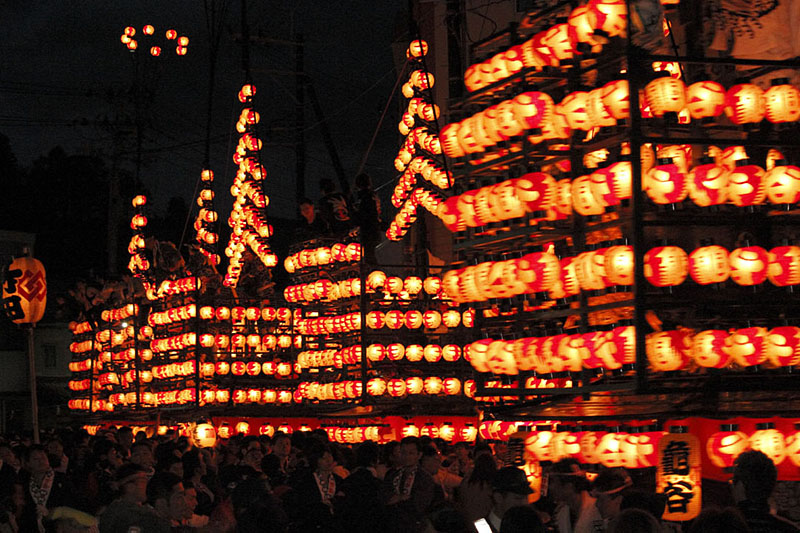
Seven drum stands with bell-shaped lanterns clad on each town, and the bonfire from Nihonmatsu Shrine is transferred to the red lanterns. It is said that if the drum stand is shaking very violently on an uphill slope, the lanterns can sometimes burn. After that, the Taikodai bravely parade around the city, singing the cheerful chants and music from the young ladies.
Each character in the music has different characteristics, and all the songs that remain in the seven characters have been designated as important intangible folk cultural properties by the prefecture.
Nihonmatsu Lantern Festival <Information>
- Name: Nihonmatsu Lantern Festival
- Dates: October 7th (Sat), 8th (Sun), 9th (Mon)
- Venue: 1 yen in the downtown area of Nihonmatsu City
- Inquiries: Nihonmatsu Lantern Festival Executive Committee
- Phone number: 0243-55-5122
Please check the Nihonmatsu City Tourism Federation website for traffic regulation maps, etc.
The solemn and elegant “Obama Montsuki Festival”
The Obama Montsuki Festival is a regular festival held every October at Shiomatsu Shrine in the Obama district of Nihonmatsu City. The Obama Crested Festival in 2023 will be held on Saturday, October 7th and Sunday, October 8th.
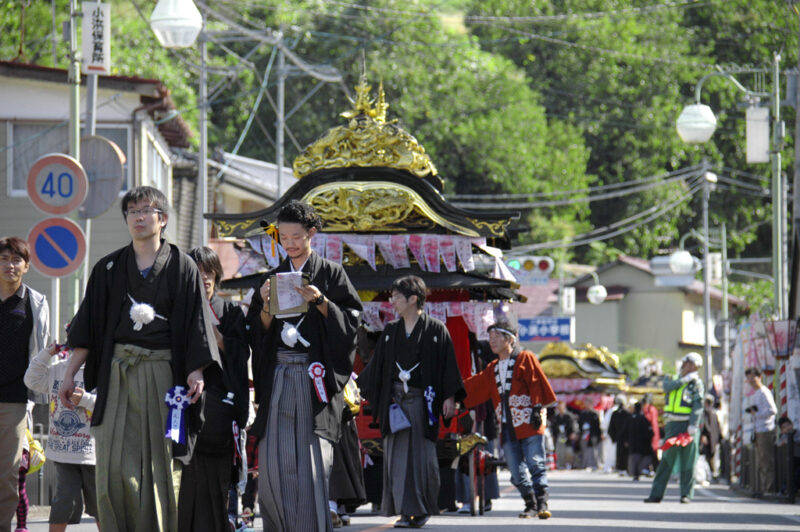
It is a Shinto ritual held at Shiomatsu Shrine, which was once the main shrine of the 33 villages of Adachi, and is called the ``Montsuki Festival'' because all those involved in the main festival wear formal attire, such as crested haori and hakama.
It is said that this festival began in the middle of the Edo period, and the history of Shiomatsu Shrine dates back to the Kamakura period. Its shape has remained unchanged for more than 200 years, and parishioners dressed in crested hakama parade around town with gorgeous gold-leafed drum stands.
The highlight is the main festival on the second day. In the evening, the union lantern festival is held in a gorgeous manner, featuring four town taikodais, the four towns of Sorimachi, Fujimachi, Shinmachi, and Toriimachi, which have been transformed into lantern floats.
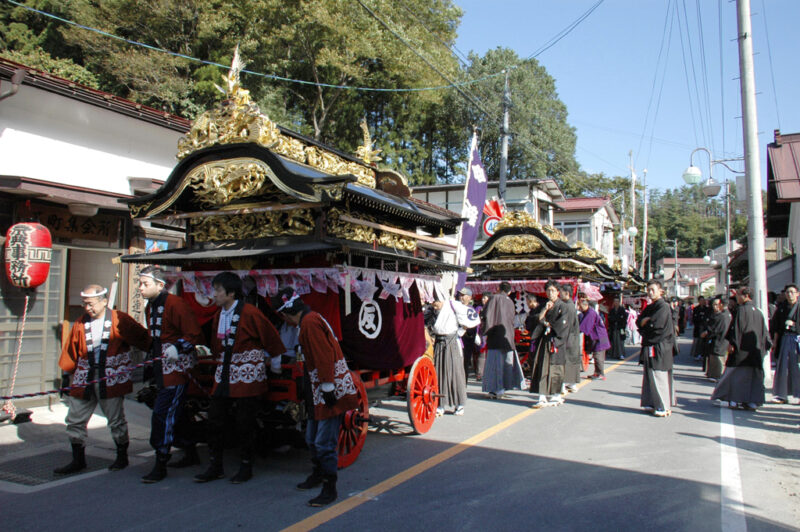
This festival features three large expressions: a taiko drum stand that slowly moves along with a young king with a crest, a taiko drum stand that parades bravely with lively shangiribayashi, and a taiko drum stand that decorates a bell-like lantern to decorate an autumn night.
Obama Montsuki Festival <Information>
- Name: Shiomatsu Shrine Annual Festival Obama Montsuki Festival
- Date: October 7th (Sat) and 8th (Sun)
- Venue: Shiomatsu Shrine, Nihonmatsu City Obama Aza Sorimachi, Fujimachi, Shinmachi, Torii Town
- Contact: Iwashiro Tourism Association
- Phone number: 0243-65-2803
- Parking: Please use the Iwashiro branch parking lot.
Fierce collision “Harimichi Abare Dashi”
Next we'd like to introduce the "Needle Road Float," which features a large float that catches the eye. It is said to be a festival since the era of Harido Genta (1585), and boasts a tradition of over 400 years.
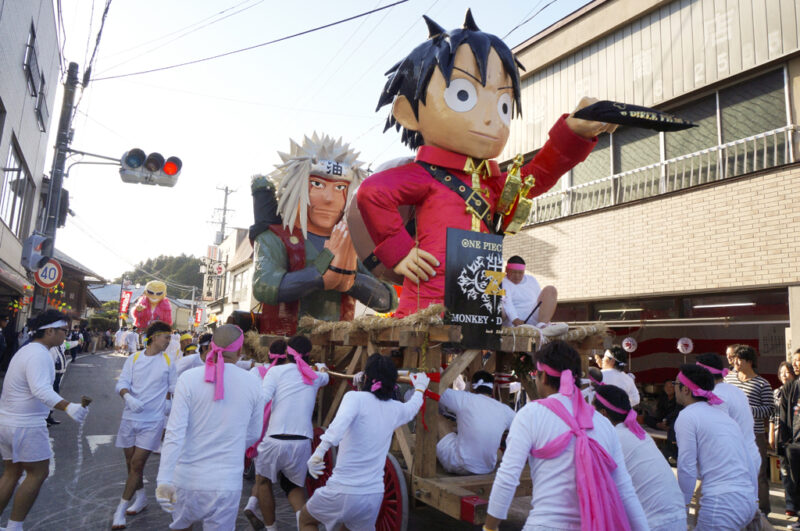
Held every year on the Sunday before the sports day. The venerable Harimichi Abare Dashi, which has continued since the Heian period, consists of the ``Main Festival'' on the first day, and the ``Ato Matsuri'' on the second day, when Abare Dashi is performed.
The main event is the second day after the festival. The highlight is the intense clash that is known as the "fighting festival."
With the sound of flute, drums, and the young ladies shouting "Yoiyoi!!!", the wheels roll and the floats collide with each other. A huge roar echoes as they slammed hard as they pushed and squealed floats.

The floats are created mainly by young locals in their teens and 30s, and are made with characters familiar to children. It's interesting to see the fusion of tradition and current trends. On the first day, all the floats will gather at the Towa Cultural Center and a commemorative photo will be held.
Harido no Ubare float <Information>
- Name: Harimichi Abare Dashi
- Date: Scheduled for the second Sunday of October
- Venue: Harimichi Shopping Street main street
- Inquiries: Towa Tourism Association (Towa Branch Regional Promotion Division)
- Phone: 0243-66-2490
For details, please check the official website of the Harimichi Wakaren Association
"Kibata no Hanata Festival" where colorful flags fly
The Kibata Hata Festival is a festival where a procession of over 100 handmade hata, large and small, decorated in five colors, echoes of conch shells, and walks along the mountain paths of Abukuma to head for Mt. Kibata.
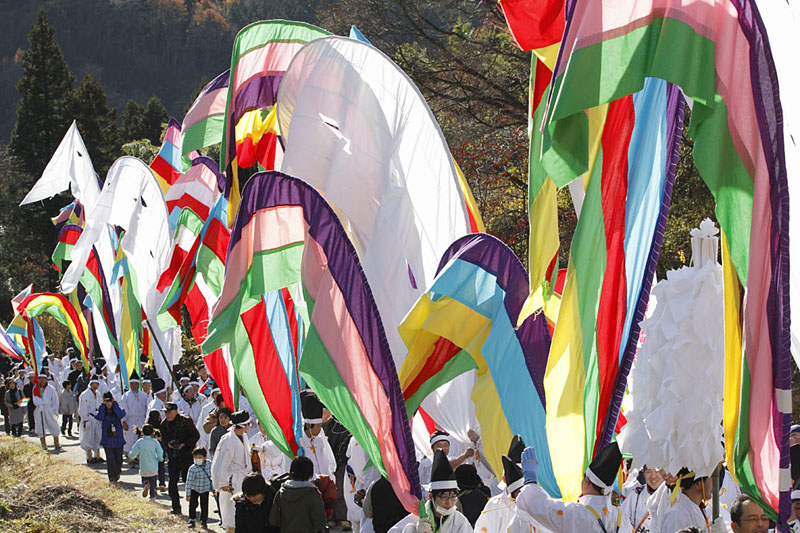
The festival dates back to the role of the 19th year of Tenki (1055). The army of Genji, who had lost the battle, barricaded himself at Kibatayama on just a few horses, and it is said that the snow that had fallen overnight made the entire Kibatayama turn white.
This festival is based on a story about Abe's army that had been chasing after this incident and mistakenly saw it as Genji's white flag and then fled without fighting. It inherited the heroic Heian picture scroll and has been handed down for 970 years.

The procession of colorful flags led by a white flag is said to be one of Japan's three major flag festivals, and has been designated as a national important intangible folk cultural property.
In addition to the procession, "Hayama Cagemori" and "Woman" that have become a winter tradition.
Kibata no Hata Festival <Information>
- Name: Kobata no Hata Festival
- Date: Scheduled to be held on the first Sunday of December
- Venue: Jie Park (Jie, Kobata, Nihonmatsu City)
- Inquiries: Nihonmatsu City Hall Towa Branch Regional Development Division
- Phone number: 0243-66-2490
Summary of 4 traditional Nihonmatsu festivals
Nihonmatsu is home to a wide range of festivals, from lively festivals to solemn festivals.
All of these festivals have deep histories and are interesting traditions that have been passed down to the present day. From autumn onwards, Nihonmatsu is full of things to see! Please come and experience a Japanese festival in Nihonmatsu.




![Nihonmatsu Shrine, the main shrine of the former Nihonmatsu Domain, famous for its lantern festival [Fukushima Prefecture] Approach to Nihonmatsu Shrine](https://jp.neft.asia/wp-content/uploads/2024/02/PXL_20231012_061040533-150x150.jpg)
![[Nihonmatsu City, Fukushima Prefecture] Chrysanthemum dolls and Namie Yakisoba at Nihonmatsu Castle! Castle town Nihonmatsu is recommended for sightseeing in autumn! 11_DSC8568](https://jp.neft.asia/wp-content/uploads/2023/09/11_DSC8568-1-150x150.jpg)
![A report on the experience of "Whiskey Collection Koriyama," Tohoku's first whiskey event! [Fukushima Prefecture] Whiskey Collection Koriyama](https://jp.neft.asia/wp-content/uploads/2024/10/IMG_0751-EDIT-150x150.jpg)
![The delicacy "Anko" is a delicious winter taste on the beach! [Fukushima Prefecture] Monkfish](https://jp.neft.asia/wp-content/uploads/2022/02/2054097_m-150x150.jpg)
![A tour of the 33 remaining Kannon in Minami Aizu. "Thirty-three Kannon" certified as a Japanese Heritage Site [Fukushima Prefecture] 11_MG_9631](https://jp.neft.asia/wp-content/uploads/2022/11/11_MG_9631-150x150.jpg)
!["Negaseki" is one of the three ancient Oshu sekies that surpasses Minamoto Yoshitsune and Matsuo Basho [Tsuruoka City, Yamagata Prefecture] 3809167_m](https://jp.neft.asia/wp-content/uploads/2023/02/3809167_m-150x150.jpg)
![What is "disc dumplings" in Fukushima City? Introducing recommended shops and history [Fukushima Prefecture] Disc Dumplings 1](https://jp.neft.asia/wp-content/uploads/2023/03/31485117_m-150x150.jpg)
